
|
The sailing stones are a geological phenomenon where rocks move in long tracks along a smooth valley floor without human or animal intervention. They have been recorded and studied in a number of places around Racetrack Playa, Death Valley, where the number and length of travel grooves are notable. The force behind their movement is not understood and is subject to research. |
 |
|
Racetrack stones only move every two or three years and most tracks develop over three or four years. Stones with rough bottoms leave straight striated tracks while those with smooth bottoms wander. Stones sometimes turn over, exposing another edge to the ground and leaving a different track in the stone's wake. |
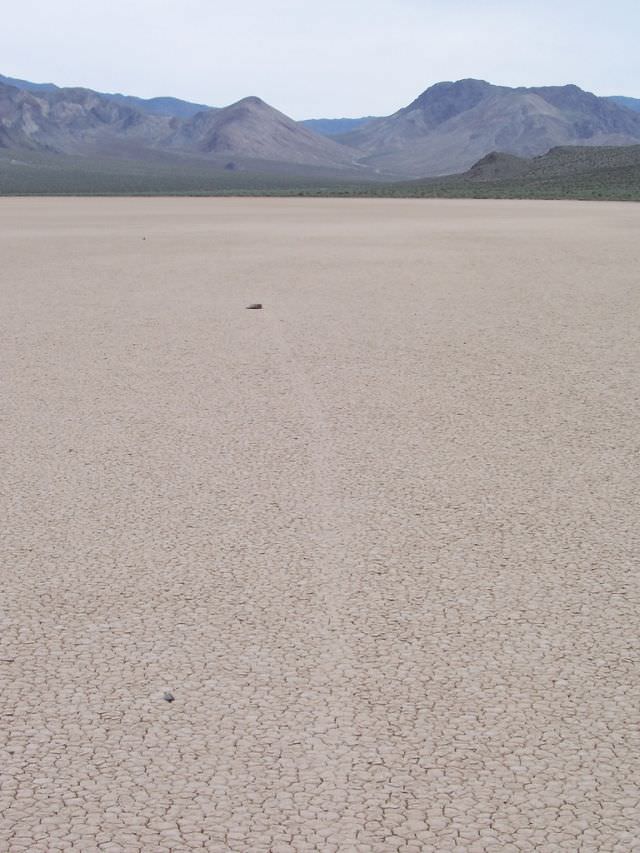 |
|
Sliding rock trails fluctuate in direction and length. Some rocks which start next to each other start out traveling parallel, but one may abruptly change direction to the left, right, or even back the direction it came from. Length also varies because two similarly sized and shaped rocks could travel uniformly, then one could burst ahead or stop dead in its track. |
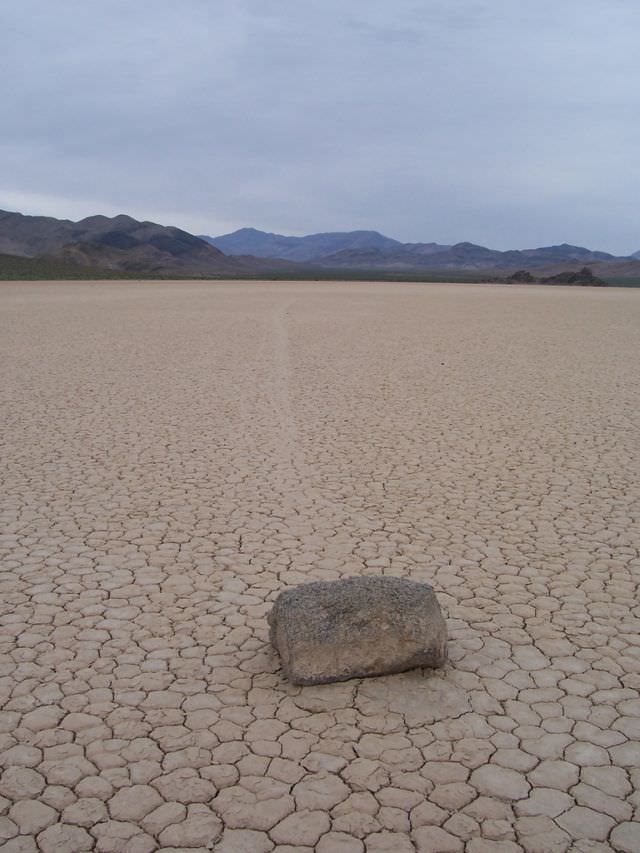 |
|
Speed is an unknown variable. Since these stones are rarely transported and nobody has witnessed the movement, the speeds the rocks travel at are not known. |
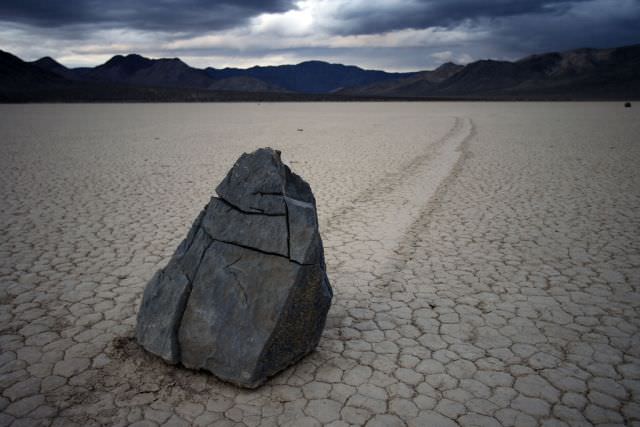 |
|
Geologists Jim McAllister and Allen Agnew mapped the bedrock of the area in 1948 and made note of the tracks. Naturalists from the National Park Service later wrote more detailed descriptions and Life magazine featured a set of photographs from The Racetrack. Speculation about how the stones may move started at this time. Various explanations have been put forward over the years that have ranged from the supernatural to the very complex. |
 |
|
Most hypotheses favored by interested geologists posit that strong winds when the mud is wet are at least in part responsible. Some stones weigh as much as a human, which some researchers, such as geologist George M. Stanley, feel is too heavy for the area's wind to move. They maintain that ice sheets around the stones either help to catch the wind or move in ice flows. |
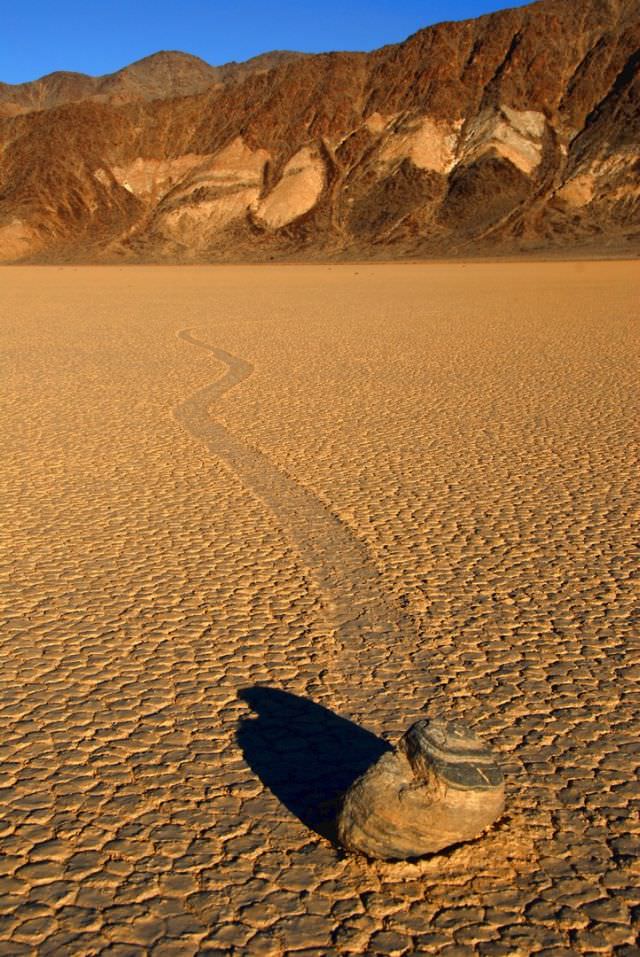 |
|
Researches studied some stones for several years. Ten of the initial twenty-five stones moved in the first winter with Mary Ann (stone A) covering the longest distance at 212 feet (64.5 m). Two of the next six monitored winters also saw multiple stones move. No stones were confirmed to have moved in the summer and some winters none or only a few stones moved. In the end all but two of the thirty monitored stones moved during the seven year study. At 2.5 inches (6.5 cm) in diameter Nancy (stone H) was the smallest monitored stone. It also moved the longest cumulative distance, 860 feet (262 m), and the greatest single winter movement, 659 feet (201 m). The largest stone to move was 80 pounds (36 kg). |
 |
|
Wind and ice both are the favored hypothesis for these mysterious sliding rocks. But as those are only hypothesises, we can say that the mystery remains... |
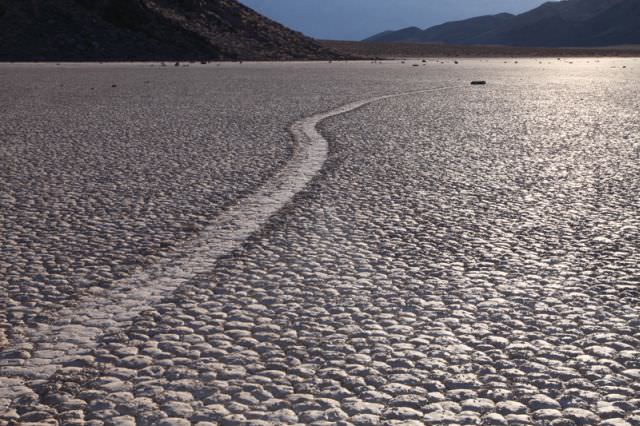 |
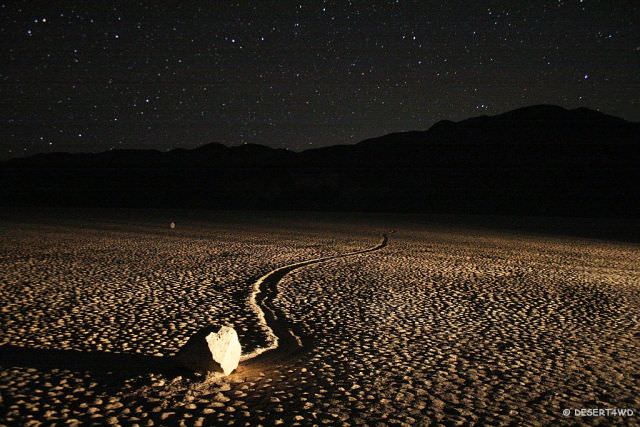 |
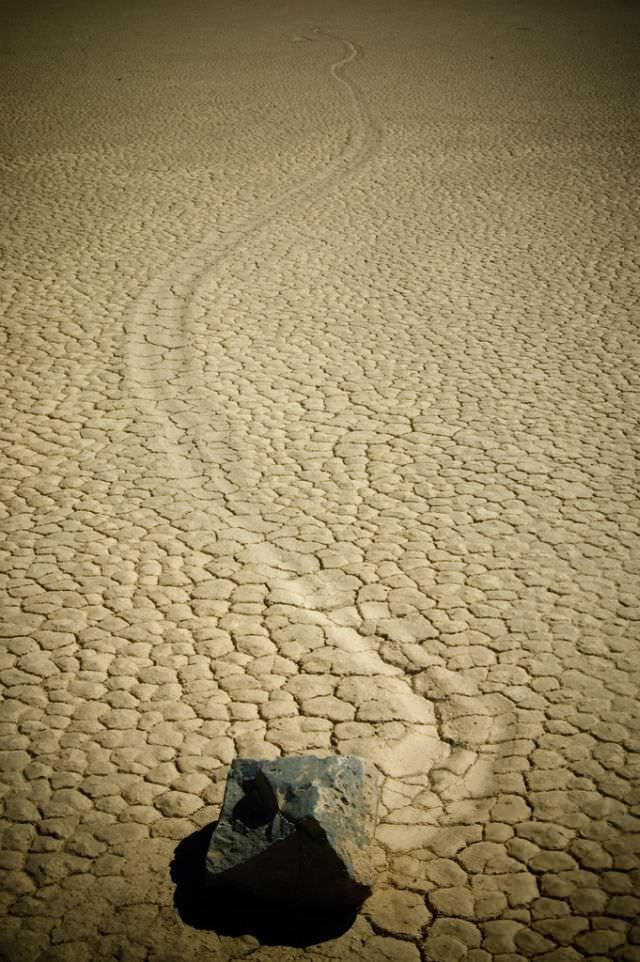 |
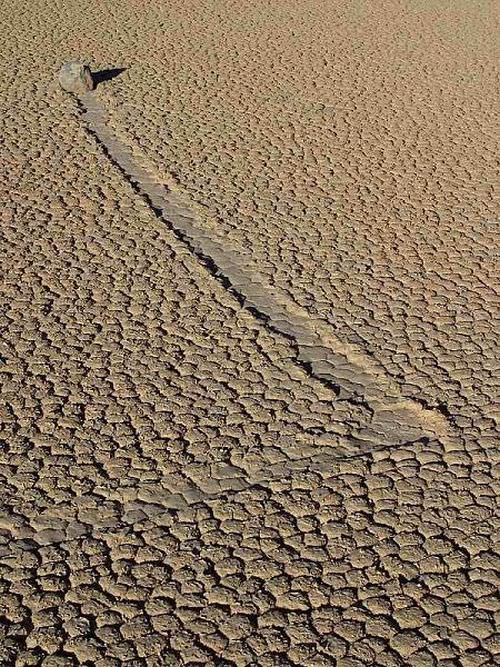 |
 |
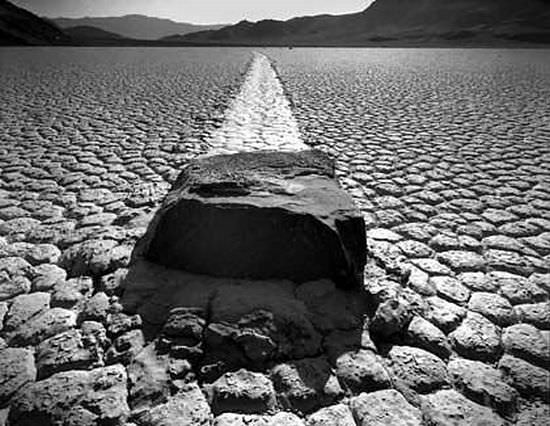 |
 |
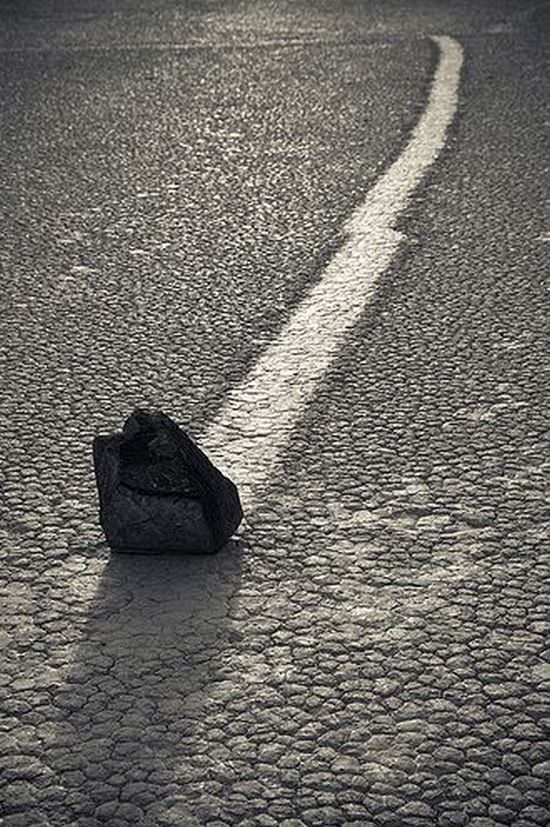 |
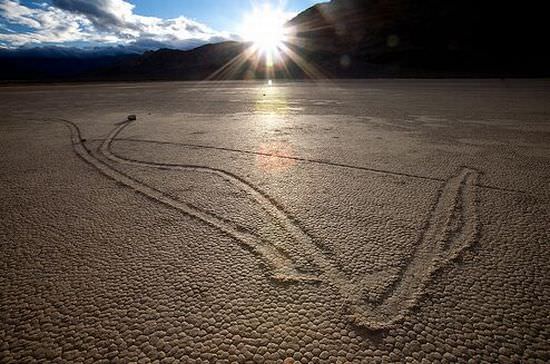 |
 |
 |
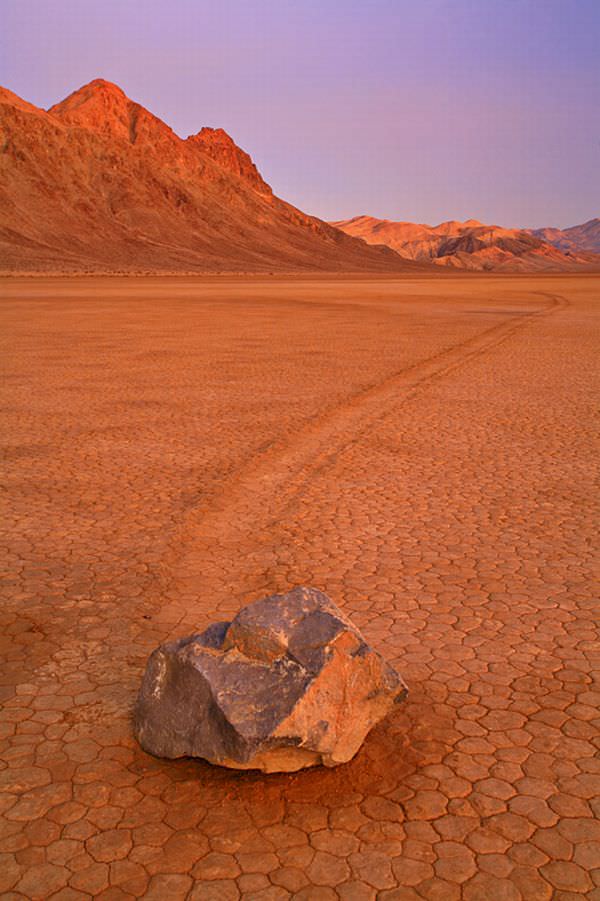 |
Submitted by: Karen Hed.

These Photos of 1920s Criminals are Fascinating
Through archival snippets, we uncover tales of deception, ambition, and survival, painting a vivid tableau of a bygone time where lawlessness wove its complex tapestry.

These Photos Will Make You Rub Your Eyes in Puzzlement
These photos are all very puzzling at first look, maybe even at the second as well...

The Incredible Sights and Sites of Salamanca, Spain!
Looking at the most interesting and beautiful parts of Salamanca, Spain

These Cars are Completely Bizarre and Hilarious!
From cars that look like other things to cars that look like they are about to fight zombies to cars that are half a motorcycle!

Ever Hear of THESE Mixed Dog Breeds? 50 Beautiful Pairings
This post will show you no less than 50 of the most adorable mixes of dogs you may have never encountered before.

Get in Here for Some Heartwarming Captures!
Let these captures and posts warm your heart with some positive stories.
 26:43
26:43
These 20 Tech Inventions Will Define the Next Decade
The future is here. Check out some emerging technologies that are all set to chane our world forever.

Guide: All About the Gut-Brain Connection in Your Body
it's becoming increasingly clear just how influential our tiny gut microbes are in shaping our mood and even our overall health.
 2:01
2:01
What Does the Appendix Actually DO?
Dr. Berg explains, in this video, all about the appendix and what it actually does in our body.

The Surprisingly Convoluted History of Traffic Lights
What did the first-ever traffic light look like? Probably stranger than you imagine...

20 Amazingly Simple Inventions That Make Life Easier
Some wonderful inventions can fix some of the most annoying little problems that bug us every single day. Here are 20 of the most inventive ideas I've ever seen that I can't believe no one has invented before.
 12:38
12:38
Revolutionize Your Green Space: 12 Cool Garden Gadgets
Take your garden to the next level with the amazingly cool inventions and gadgets.
 13:55
13:55
The Disappearing Computer: Revolution on a Personal Scale
What happens when we lose the physical large computer all together? This lecture explains what ahead for computers.

7 Weird Facts About the Human Voice That Will Surprise You
We bet you didn’t know these peculiar facts about the human voice.
 19:33
19:33
Thought Nature is Wild? See It Under a Microscope
You won't believe the things you could discover by looking at everyday items under a microscope.

There are Some Great Secrets Found in Mathematics...
Numbers hold some great secrets - they even tell us about life!

17 Incredible Eye Facts You Have To See To Believe
They say the eyes are the window to the soul, and they also happen to be our windows to the world. Here are 17 insanely fascinating facts about eyes.

These Optical Illusions Will Shock Your Mind!
Optical illusions create miscommunication between our eyes and brain making, us see things that are not really there or not see things that are right in front of us. See for yourself.

These Wacky Inventions of the Past Appear Odd to Us Today!
These vintage tech inventions may look very interesting or even incredible, but their practicality today is questionable...

Wow! Who Knew That Jupiter Was So Mesmerizing?
Take a look at Jupiter like you've never seen it before!
 8:11
8:11
Fascinating: What is the Deepest Hole Humanity Has Dug?
This video explains how low humanity has dug down so far.

First US Embryo to be 'Edited'; Rise of Genetic Changes!
Could the first human embryos be genetically modified?

Scientists Develop Wrap That Determines if Food is Spoiled
Scientists at MIT have developed a biodegradable plastic-like wrap that changes color when food goes bad. Find out more…

19 Everyday Items That Started as Military Inventions
Look around your home, and you’ll surely find a handful of these items that were originally developed for the armed forces.

Take an Incredible Tour of Our Colossal Milky Way Galaxy
Fly Through the Milky Way Galaxy!

Remembering the Life and Wisdom of Stephen Hawking
Stephen Hawking possessed one of the greatest minds the world has ever seen, but was also impaired by a debilitating disease. Here are his life ant times.

10 Real-Life Technologies That Science Fiction Foretold
Sometimes even the wildest science-fiction predictions about the future come true.

Travel From the Sun to Pluto With Our Interactive Guide!
The solar system is a fascinating place, and we wanted to bring you an interactive journey that you can use to travel through it. Enjoy the journey!
 5:39
5:39
Why Are Your Ears Ringing? The Causes Explained
Nearly 15% of the human population worldwide are plagued by this strange sensation, but most people don't know the causes behind ringing in the ears...

17 Experiments That Produced Very Bizarre Results...
Take a look at this collection of photos showing how common people performed some fascinating accidental scientific experiments.
 13:01
13:01
Understanding the Aging Process of Our Body Parts
Find out how every organ and body part in our body changes with age.
 9:47
9:47
Behind the Scenes of the Human-Like Atlas Robot
In this video, we get a behind-the-scenes look at the development of the incredible Atlas robot.
 6:47
6:47
7 Exciting Physics Tricks You Have to See!
Watch these seven remarkable physics tricks in this exciting and fun video.
 1:53
1:53
Sci Fi Tech: Jetpack Rescue!
Paramedics in Britain are being trained to conduct mountain or sea rescues using jet suits. Find out more.

These Ancient Inventions Have Got Scientists Stumped!
Here are 12 items from long ago which prove that our ancestors possessed knowledge and skills far more advanced than we once believed them to be.

Wonder Why Time Speeds Up As You Age? Here's the Answer
We all get the sensation that time moves faster as we get older, but there are scientific reasons for that. Read on to learn about this fascinating phenomenon.

6 Shocking Truths About Coffee You Never Knew
Have you been believing these common coffee myths too?

Chocolate Exposed! Here's What It Does to Your Brain!
Just what is it that makes chocolate so irresistible to so many people around the world? Find all of the answers in the article.

8 Inventions of 2023 That Will Change The Way We Live
This year was a prominent one for ground-breaking innovations that will change the way we live.
 6:25
6:25
These Fire Tricks Will Wow You, But Don't Try Them!
These fire tricks are incredible to look at, but please don't try this at home...

11 Technologies to Potentially Achieving Immortality
Scientists are hard at work developing technologies that could extend our lifespans and even make us immortal. Here are 11 of them.

Welcome to the Fastest Maze-Solving Competition Ever Made...
Welcome to Micromouse, a competition for the quick of eyes and the quick of minds. This is the oldest robotics race.

Incredible: First-Ever Complete Map of an Insect's Brain
This incredible project is the first to completely map the brain of an insect, a monumental undertaking even for such a small creature.

INTERACTIVE: A Guide to the Workings of the Human Body
The human body is the most complex machine known to man, and the amount of things it has to do to keep us alive is incredible. View this interactive guide now.
 21:07
21:07
15 Frightening Animals Early Humans Had to Live With
10 scary animals early cavemen in Africa had to deal with 200,000 years ago.

These Inventions Prove the Middle Ages Were Not So “Dark”
These groundbreaking inventions prove the Middle Ages were not so “dark,” after all!
 7:15
7:15
Toilets: The Greatest Medical Advancement in Human History
While toilets make some people laugh, they are actually a deadly serious medical advancement. This video explains what toilets mean to civilization.


